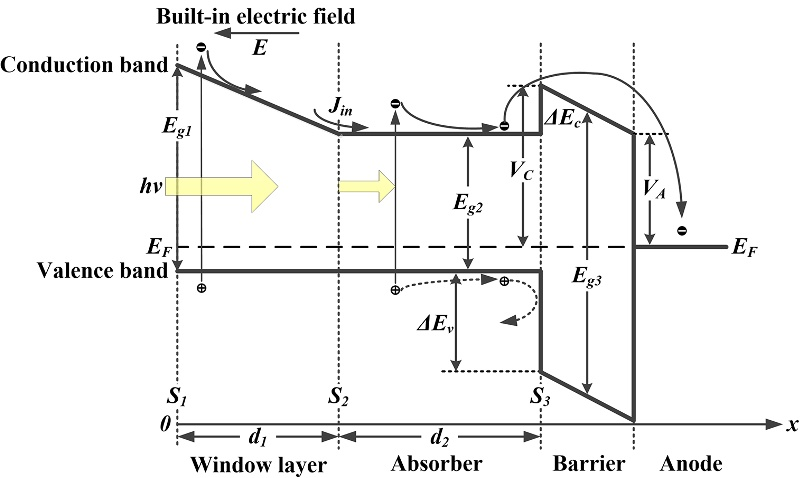To realize a high-performance solid-state photon-enhanced thermionic emission (SPETE) solar energy converter, in this study, a graded bandgap window layer is therefore adopted, throughout which the bandgap gradation is generated via the variation of Al composition in the Al x Ga 1 ? x As layer in the SPETE converter with a GaAs absorber. Based on one-dimension steady-state equation, an analytical model is formed in analyzing performance of the proposed device in our study. Theoretical simulation results indicate that not only are the losses of contact surface recombination being decreased via the bandgap-gradation-induced build-in electric field of the window layer, but also the photon-generated electrons are effectively collected, thereby improving the conversion efficiency. Moreover, the effect of bandgap energy of the contact surface and the width of the window layer on device performance is discussed. A trade-off of high-efficient SPETE converters is therefore realized between large contact surface bandgap and thin window layer width, to which the rationale lies in the improved process of electron collection facilitated by the enhanced build-in electric field rather than reducing the photon absorption in the window layer. Threshold values for barrier height at the emitting interface are presented to guarantee the ideal voltage-current characteristic. It is found that the threshold values of barrier increase with the increase in temperatures.

Schematic diagram of the graded bandgap window-layered solid-state photon-enhanced thermionic emission (SPETE) converter.


